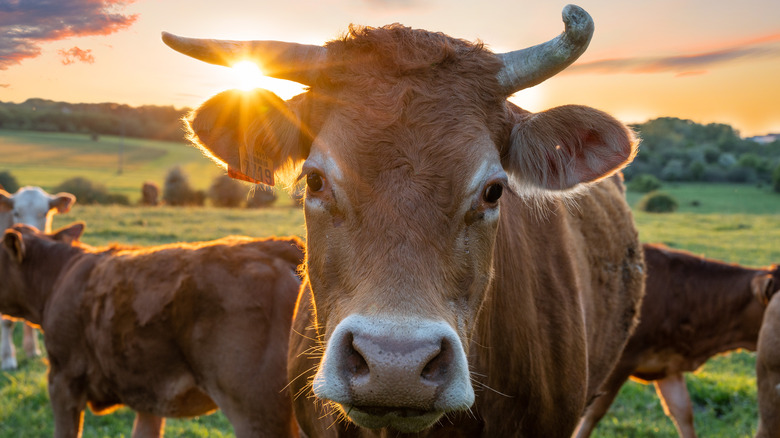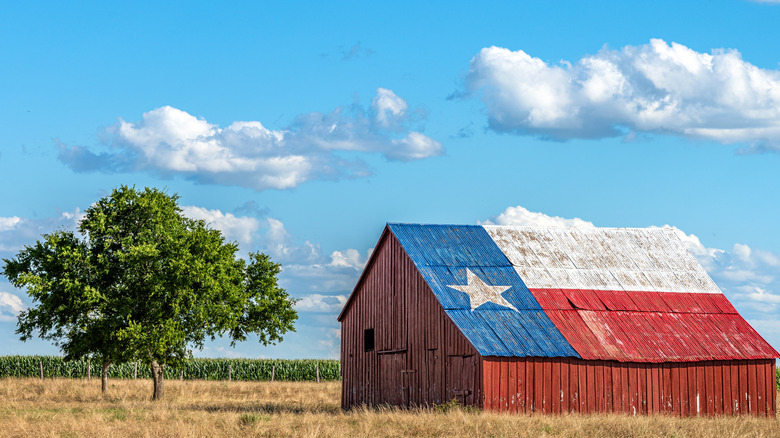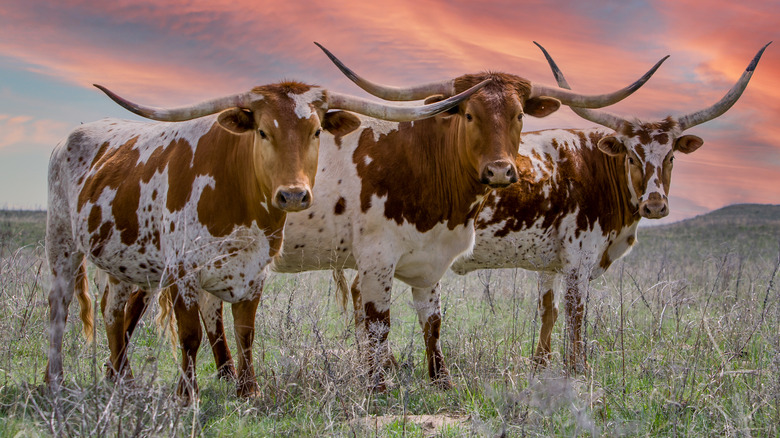The U.S. State That Produces The Most Beef
To quote former NFL star quarterback Tony Romo, "Beef. It's what's for dinner." The United States Department of Agriculture doesn't necessarily disagree. Chicken is actually the meat that Americans eat the most — per capita; we gobbled nearly 100 pounds of this farmed fowl in 2022. Beef comes in at a distant second but still managed to put up commendable numbers in 2022. Americans were chowing down on an average of just under 60 pounds per person in the same year. That's a whole lot of spaghetti and meatballs and a veritable mountain of grilled burgers.
Though it's clear that beef is enjoyed all across America, there's only one state that can claim to be the number-one beef producer in the country. Interestingly enough, it just so happens to be the same state that houses the football team where Tony Romo played for the entirety of his illustrious career (via the NFL).
Texas is No. 1 in beef production
In 2022, it's estimated that the United States produced a staggering 27 billion pounds of beef, per Statista. Making that much beef means, of course, raising a lot of beef cattle. According to the United States Department of Agriculture's Annual Cattle Review, the total count of beef cattle in the United States was just over 30 million. In the same year, the count of beef cows in Texas alone was nearly 4.5 million, meaning the state housed about 15% of the nation's total beef cattle population. This represents a slight but noteworthy decline in the beef cow population since 2021.
Agrilife Today, citing Texas A&M university professor David Anderson, explains that the decline in cattle population is linked to the recent drought in Texas, which impacts the beef cow's food supply. Though it is not yet clear just how badly the drought will affect Texas farmers economically, a 2011 drought cost ranchers in the region over $3.23 billion.
The meaty history of Texas beef
Texas and cattle are inextricably linked with one another, culturally. There's a reason why you'll find only beef in your Texas chili and no beans.
According to the Texas Historical Commission, cattle drivers in the region have been around since as early as the 1700s. At the time, the area was called Texas, and it was under the control of New Spain, which would become modern-day Mexico. The Spanish set up a series of missions to keep the French from attempting to claim their territory, and one mission had 4,800 Spanish cattle. Even after the Spanish deserted the region, people began to round up the ever-growing herds and transport them across the region that is now the southern United States to be sold. There are still remnants of these beef cows today; the Texas longhorn is an ancestor of Spanish cattle.
However, it was in the era following the American Civil War when Texas became the beef cattle hub it is today, per Nebraska Studies. Many Texans left the state to fight for the Confederacy and left their cattle to graze the fields. The herds grew, even in the absence of the ranchers, and Texas beef became a hot commodity in a nation recovering from war.
As the saying goes, everything's bigger in Texas, which is particularly true regarding beef production numbers.


